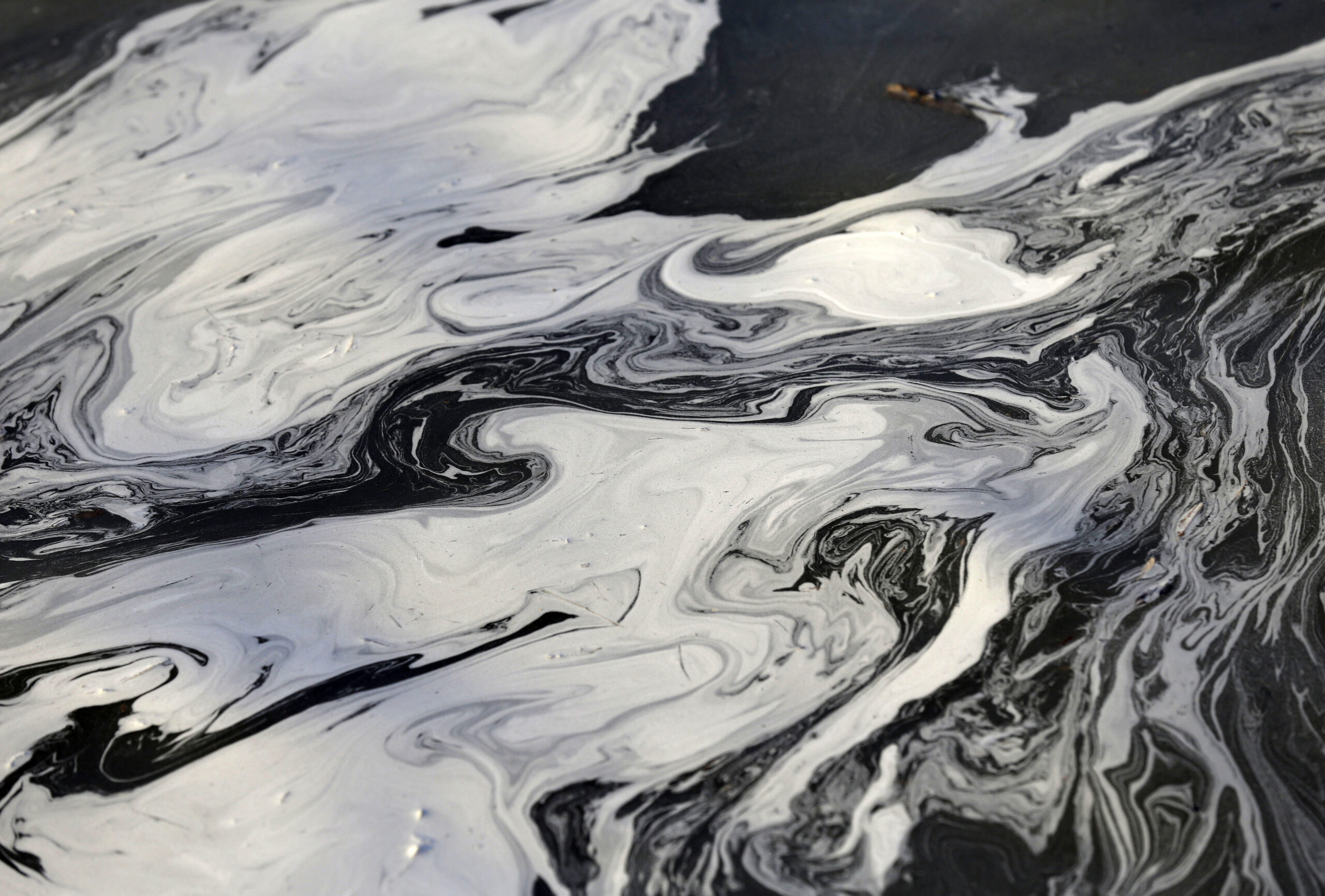How Georgia Protected Its Salt Marsh 50 Years Ago, And Why That’s Important For The Future
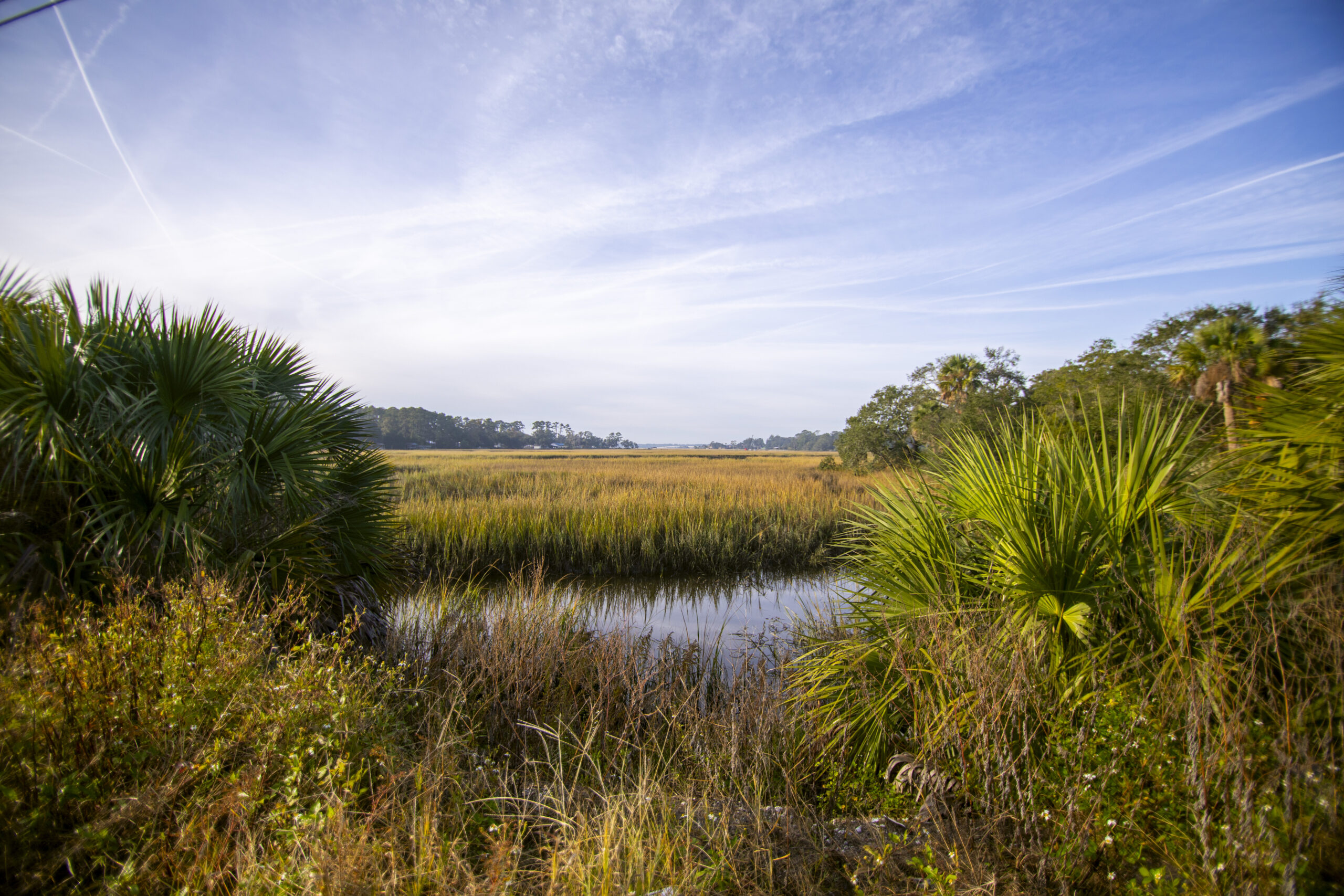
This year marks the 50th anniversary of the Georgia law that protects the state’s coastal salt marsh.
Alphonso Whitfield / WABE
Listen: Part one above and part two below
Georgia doesn’t have a very big coastline; it’s only about 100 miles. But the coast it does have is lined by salt marsh, the muddy expanse of tall grass and meandering creeks between the mainland and the barrier islands.
“I don’t know that anybody could look out across the Georgia salt marsh, the Golden Isles, and not be filled with ecstasy,” said Georgia writer Janisse Ray, sitting on the edge of the marsh looking towards Sapelo Island.
“And what is so amazing is that we’ve protected so much of it,” she said.
This year marks the 50th anniversary of the Georgia law that protects the state’s coastal salt marsh.
The marsh is an iconic Georgia landscape, vital to wildlife, to tourism and to fishermen. It serves as a nursery for fish, shrimp and crabs. It’s a wild place where people kayak and birdwatch. And it’s adjacent to valuable real estate, with marsh views seen as an asset.
“I don’t think anything would survive without the marsh,” said Earnest McIntosh Sr., a commercial fisherman and oyster farmer. “I mean, we have to have it.”
The marsh’s value and its beauty might be taken for granted now, but in the late-1960s, there was a proposal to mine Georgia’s salt marsh. To dig it up, then fill it in.
The ensuing fight and the law that got passed to protect the marsh are why Georgia still has nearly 400,000 acres of coastal marsh, about a third of the salt marsh on the entire Eastern Seaboard.
And, though supporters of the law didn’t realize it at the time, Georgia’s Coastal Marshlands Protection Act is also important for the state’s future. Because as the sea level rises, the marshes that got saved back then are helping the state adapt now.
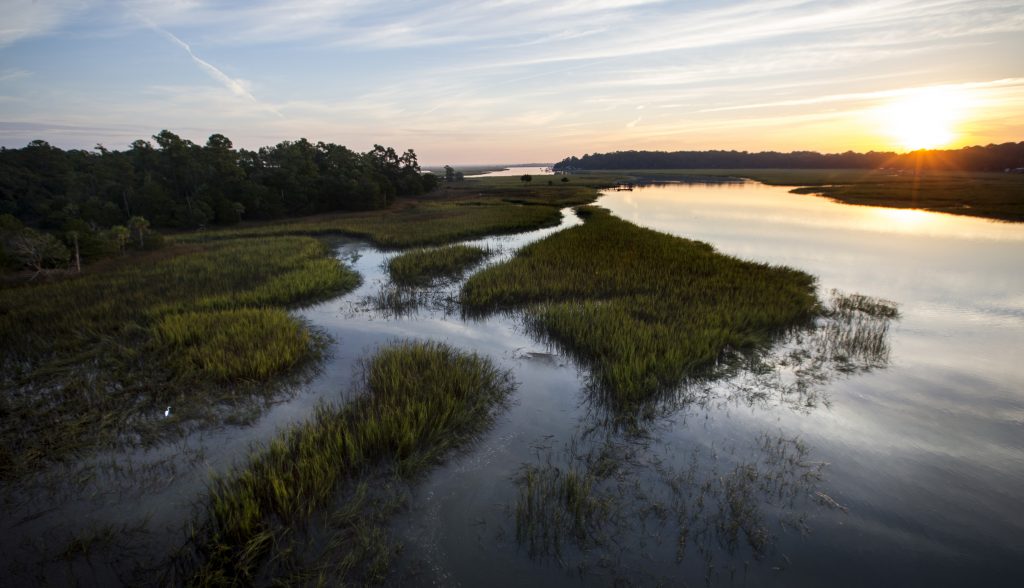
‘The Match That Lit the Dynamite’
The fight to save the marshes started with an Oklahoma company called Kerr-McGee, which wanted to mine about 72,000 acres of marsh near Little Tybee Island for phosphate.
The proposal in 1968 set off alarm bells around the state.
“That was sort of the match that lit the dynamite that put this issue on the front page and in the front minds of Georgians,” said Paul Bolster, a former state representative who recently published “Saving the Georgia Coast,” a book about the history of the Coastal Marshlands Protection Act.
Up to that point, there hadn’t been much development on the coast or on the islands, let alone of the marsh itself.
That’s at least in part because the islands were largely owned by wealthy families that used them as vacation destinations, Bolster said. (This also helps explain why so many of Georgia’s barrier islands have stayed somewhat wild. The state has more than a dozen islands, but only four are reachable by car.)
“They were interested in the retreats that those islands provided for them,” he said. “Fancy homes. Presidents came down and visited them at their palatial houses. And so they weren’t interested in developing.”
The phosphate mining proposal, which would have affected about a third of Georgia’s salt marsh, was not well received, Bolster said. There was such a big turnout when the state held a hearing on it; they had to move to a bigger location and add a second day. “Probably 200 people testified, and maybe only one or two said anything good about the proposal.”
The Coastal Marshlands Protection Act
It wasn’t just the grassroots response. The proposal got a state legislator from St. Simons Island named Reid Harris thinking about how a law could protect the marsh.
Harris’s Coastal Marshlands Protection Act is based on the idea that the marshes aren’t privately owned but instead belong to the people of Georgia. And any construction that could affect the salt marsh – with some exceptions – has to get a permit.
Harris had support from scientists at UGA, including Eugene Odum, who studied the ecological value of the salt marsh.
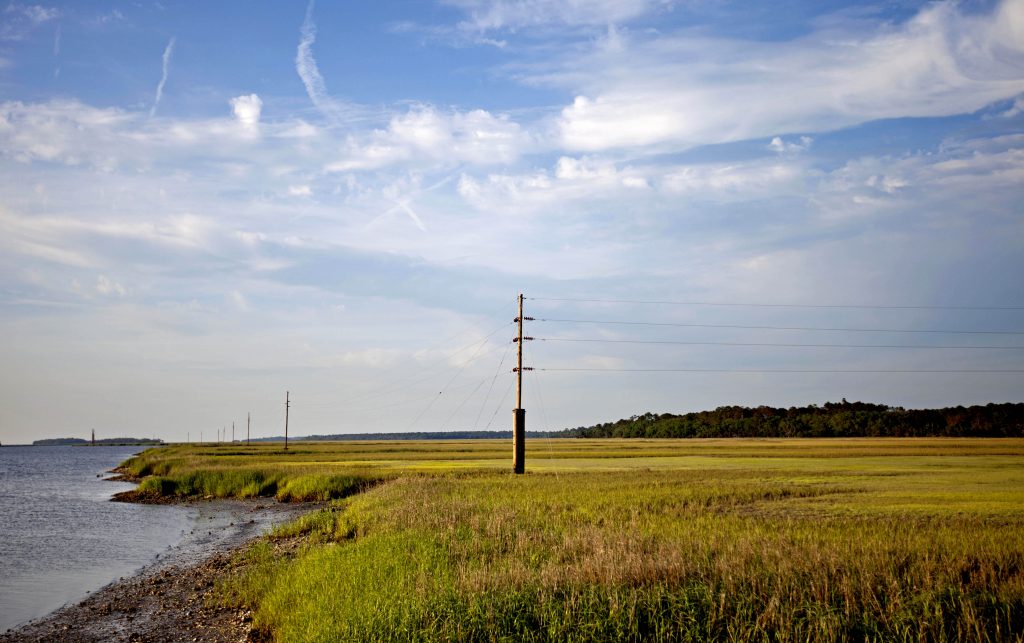
He also got a lot of help from Georgia’s garden club members, who were organized by Jane Yarn to get involved in issues beyond their social gatherings.
They sent a barrage of letters to legislators and the governor and put pressure on their husbands in the statehouse. According to Bolster, Governor Lester Maddox said he had received “barrels” of letters supporting the law.
Still, getting the law passed was a big fight. Supporters didn’t know if Governor Lester Maddox would veto it or not until the moment he signed it.
It was a progressive law for its time, said Megan Desrosiers, executive director of the Georgia environmental group, 100 Miles.
“That is actually what has protected this vast marshland that we have,” she said. “If you look at states like Florida and South Carolina, they don’t have laws that are the equivalent of the Coastal Marshlands Protection Act, and their marshes are filled.”
Higher Tides
Now, there’s a newer challenge on Georgia’s coast: sea level rise.
“There is evidence of change,” said Jill Andrews, chief of the Coastal Management Section in Georgia’s Coastal Resources Division. “It’s not obvious. It’s very incremental. It’s very slow.”
But still, the change is creeping in.
“We’ll get these calls of somebody calling and saying, ‘I just don’t understand why I have all these fiddler crab burrows in my vegetable garden. They weren’t there before,’” she said. “We hear that again and again, ‘It wasn’t there before.’”
Human-caused climate change makes sea levels higher in two ways, scientists say. The first: Warmer air temperatures melt ice from glaciers and ice sheets. That water flows into the oceans, so then there’s more water. The second: The oceans themselves are getting warmer, and warm water takes up more space than cold water.
On the Georgia coast, sea levels are getting higher by a little over a tenth of an inch a year, adding up to close to a foot a century.
“We have data for the last 80 years that shows us that sea levels have been steadily increasing,” said Clark Alexander, a coastal geologist and director of UGA’s Skidaway Institute of Oceanography.
But that doesn’t mean the marshes will end up underwater, he said. As tides get higher, plants that can’t handle salt water die, and the salt marsh plants move up.
“Our marshes are able to migrate into the uplands,” Alexander said.
And the Coastal Marshlands Protection Act moves, too, because it doesn’t operate with a static marsh line on a map. Instead, its protections follow the marsh.
When someone wants to build near the marsh, they have to get a permit. And to get that permit, they have to show where the marsh is. The next time there’s a project, they have to measure the location of the marsh again.
“To that extent, the Marsh Act can be responsive,” Andrews said.
There is construction that can stop the marsh from moving, such as shoreline stabilization projects. But Andrews said her agency is working on protecting places so that the marshes can keep moving up as they need to.
“There’s space here that the marshes provide for the sea level to rise, for us to still have the primary productivity in the estuary and the fisheries and all those other values that it currently provides,” she said. “We’re in a very unique position of having this expanse of a marsh system.”
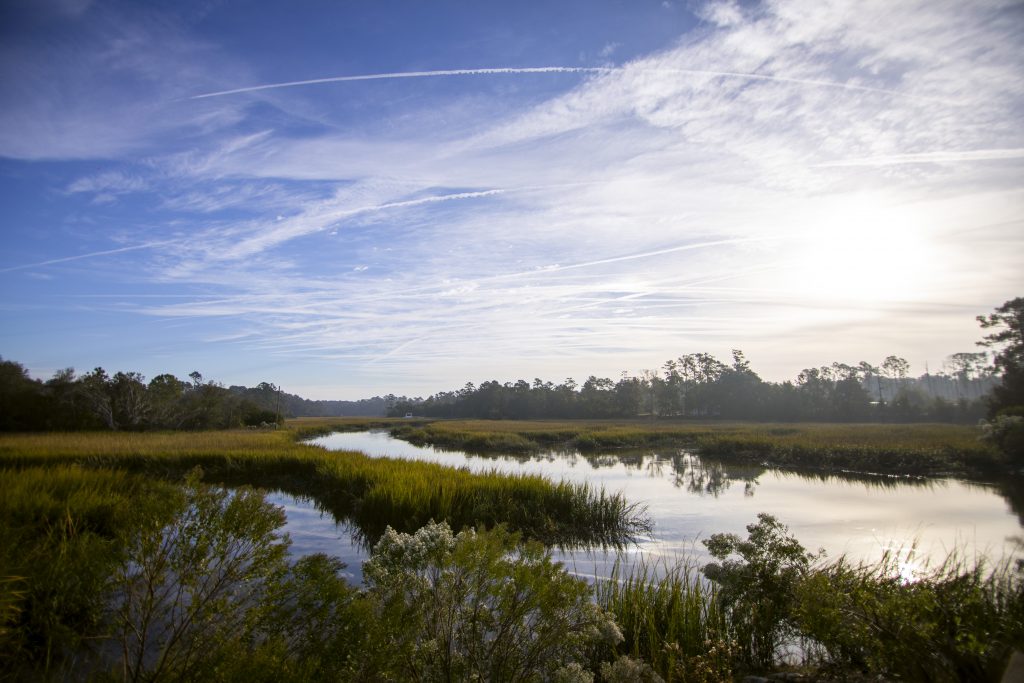
Marshes Protecting Land
But this isn’t just about the salt marsh being protected. Because the salt marsh itself buffers Georgia from sea level rise.
“The marshes play a very important role in protecting what’s on the upland here in Georgia, particularly right along the edge of where the water and the land meet,” said Alexander.
The marshes slow down water that might otherwise flood into dry areas. They also absorb waves.
Without the marsh, powerful waves from storms would slam right into the land, and erode it away, Alexander said, “as opposed to nowadays where we see a lot of that wave energy being absorbed by the marsh grasses just waving back and forth and knocking the wave energy down before it reaches our shorelines.”
Georgia is working on ways to adapt to and prepare for increasingly high tides, asking local governments to plan for sea level rise, and protecting open space so that the marshes can keep moving inland.
But Desrosiers said there will come a time when the marshes and the 50-year-old law that protects clash with private property rights.
“The question is, if the marsh moves inland, what happens? What happens to the boundaries of the marsh? And what happens to the boundaries of private property?” she said. “I think we’re still trying to figure all that out.”
But, she said, Georgia is in better shape than a lot of other states when it comes to sea level rise because it’s already protected so much land on the coast, and it’s protected its marsh.

